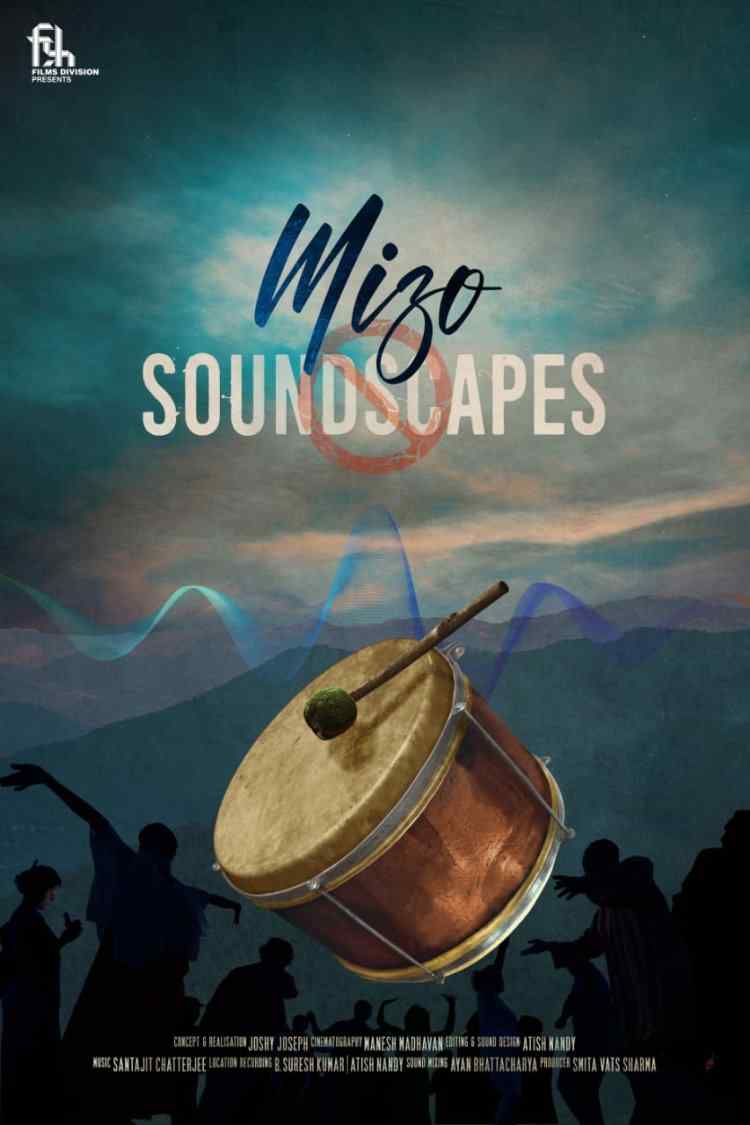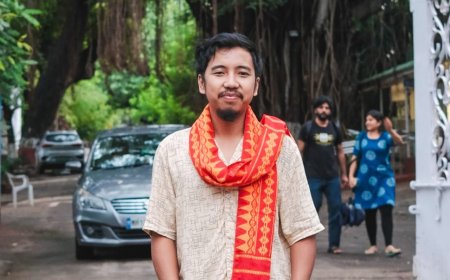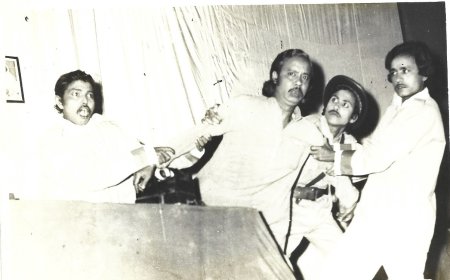Film review: MIZO SOUNDSCAPES
'Joshy Joseph's film, MIZO Soundscapes examines the relationship between the church and the Khuang on one hand and on the other hand it examines its place in Mizo society', writes Bishwajit Sheel .

Noted filmmaker Bishwajit Sheel writes on Joshy Joseph’s documentary MIZO Soundscapes.
Joshy Joseph’s documentary MIZO Soundscapes investigates the most prominent sound that resonates through the air in Mizoram throughout the year, particularly during winter. The film is about the most significant Mizo cultural icon: the ubiquitous Khuang drum. Without these drumbeats, Mizoram's soundscape is incomplete. However, it also represents Mizo traditions, spirituality, and music. One cannot imagine Mizoram's soundscapes without the Khuang's beat, whether from afar or up close. The size of the Khuang might range from 10cm to anything; the essential components are the same: a hollowed tree trunk with leather on both sides. The largest was carved in 1994, during the centennial year of Mizoram's gospel.
MIZO Soundscapes, a Film Division production, does not encompass all significant sounds in Mizoram's cultural or social realm. It instead emphasises the importance of the Khuang in Mizo religious life. Joshy Joseph's film examines the relationship between the church and the Khuang on one hand and on the other hand it examines its place in Mizo society. From 1937 through 1980, the church publicly prohibited this ubiquitous leather instrument. This was because it was used to cast away evil spirits as well. In his film, Joshy addresses the issue of outlawing this traditional musical instrument in the church. The filmmaker, however, quotes from Nigerian English novel Things Fall Apart by Chinua Achebe. These phrases help us deduce the filmmaker’s intention or the questions he wants to raise.
Filmmaker Joshy tells the story of Khuang—the drum—from an autobiographical perspective in his 22-minute documentary MIZO Soundscapes. Personified as a young woman, the drum narrates its existence or presence within Mizo society and its relationship with the church. While scrutinising the relationship between Khuang and the church, the filmmaker delved into the Mizo mind through long takes with minimal movement within the frame. He also captured silhouettes and characters' vacant or pensive looks. The narration is well-written and conveys Khuang's experience through a female voice. Joshy's objectivity is layered with poetic treatment and with strong social understanding. Being layered, it takes time to unravel them visually, emotionally, psychologically, and, of course, objectively. With its mesmerising camera work, seamless editing, music, sound design, and innovative treatment, the film engages us from beginning to the end.
The film has very few spoken words, either in the form of narration or as the voice of the talking head or of the characters. Khuang is the main character— an otherwise lifeless musical instrument that needs to be beaten to make a sound— a sound that is spiritual and hypnotising. It echoes in Mizoram's air like society's pulsation or hum.The beats of Kuang is ubiquitous in Mizoram's sound space. The filmmaker captures all these aspects effectively through the dreamlike landscape of early dawn, the clouds flowing between the mountains, the zenith of the church, and aerial footage of hilltop villages in long takes. The echoing beats of the drum, rain, gospel songs, and chisels amazed us. Joshy conveys his questions about the dictates of the church and colonialism by quoting a few lines from a Nigerian novel, Things Fall Apart by Chinua Achebe: "The sound of the drum was like the pulse of its heart. It throbbed in the air, in the sunshine, and even in the trees. It filled the village with excitement..." (The beat of the drum continues, and we see the day-to-day life of Mizos, their habitats, etc.)
Sometimes, in the film, the filmmaker takes us to a football ground. Football has a significant presence in the Mizo mindscape and soundscape. But surprisingly, the filmmaker excludes guitars in his sound space. The guitar or the Cheraw dance (bamboo dance) is an integral part of the Mizo sound space. Further, one cannot undermine Khuang's essential role in the Cheraw dance. Elsewhere in the film, the juxtaposition of the church's ban on drumming with the mourning of Landenga's death is difficult to accept. However, in support of such a parallel, it may be argued that the Mizo leader and drum are integral parts of Mizo society.
The film is Mizo-centric and does not represent others or outsiders. Thus, Khuang becomes the voice or heartbeat of spiritual and music-loving Mizos.
MIZO Soundscapes is a well-crafted narrative that raises many intriguing questions. Through autobiographical narration, Khuang's story becomes vibrant and emotional. The sound design, moody shots, and subtly raised questions make MIZO Soundscapes worth watching. It will remain to be a significant film for all documentary lovers.
***
What's Your Reaction?
































































